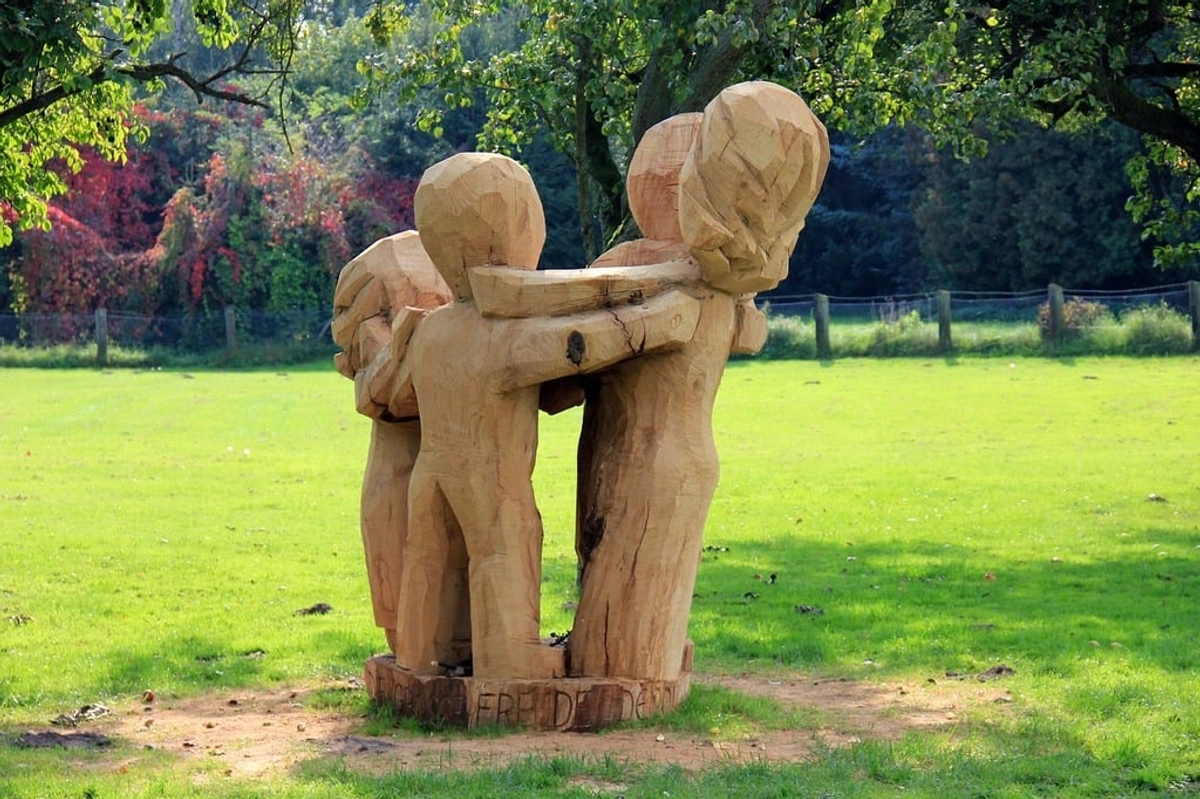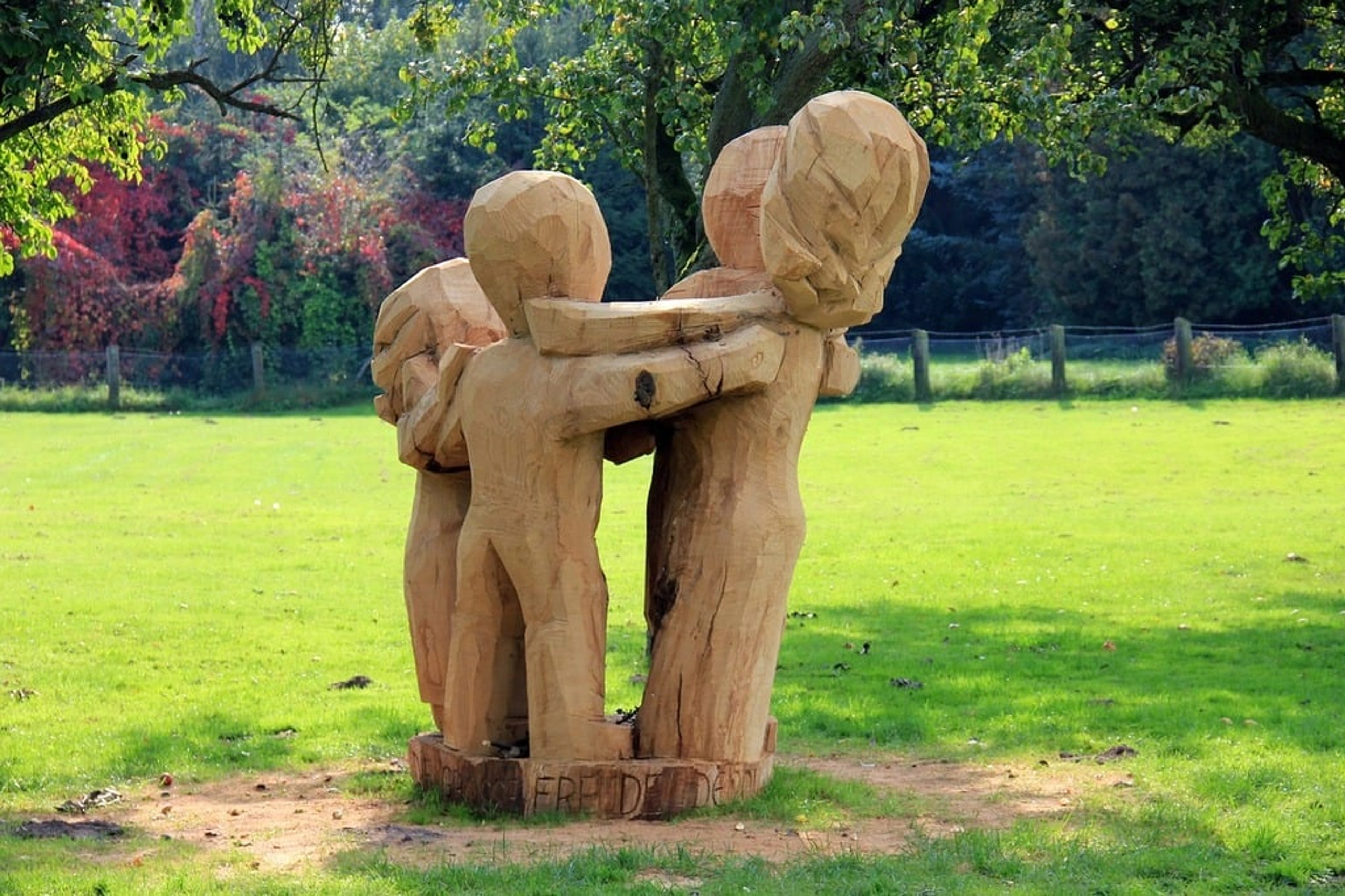
Art About Yearning: The Ache, Hope & Beauty of Longing Explored
Dive into the art of yearning. Explore how artists capture longing, from historical masters to contemporary creators, and how art connects with your own deep feelings. Discover techniques, symbolism, and where to find art that speaks to your soul.
Art About Yearning: The Ache, The Hope, and The Beautiful Mess of Longing
Oh, yearning. That quiet, persistent ache deep in your chest. It's not quite sadness, not quite desire, but a strange, beautiful blend of both. It's the feeling of something missing, something just out of reach, whether it's a person, a place, a past moment, or a future dream. It's a fundamental part of being human, isn't it? It's the echo of what was, the whisper of what could be, or the pull towards something unknown. It's like trying to remember the exact scent of rain on hot pavement – you know the feeling, but capturing it is another matter entirely.
This feeling is so universal, so deeply ingrained in the human experience, that it's no surprise artists across cultures and centuries have grappled with it. Think of the German concept of Sehnsucht, a deep, often melancholic longing for something undefined, a feeling that encompasses both the desire and the awareness that the object of longing might be unattainable. Or the Portuguese Saudade, a profound, nostalgic yearning for something or someone absent, often carrying a sense of melancholy or loss, yet also a bittersweet pleasure in remembering. These concepts show how universally this feeling is recognized, even having specific words for its nuances in different languages. Art, in its messy, beautiful way, is uniquely equipped to give form to these swirling, ineffable feelings. It's the language of the soul's quiet hum.
For me, as an artist, yearning is often the quiet engine humming beneath the surface of creation. It's the longing to translate the chaos in my head into something tangible, something that might resonate with someone else across time and space. It's the desire for connection, for understanding, for that elusive moment when a brushstroke or a color combination just clicks. Sometimes, the very act of making the art feels like a way to process the yearning itself, a kind of visual catharsis. It's like trying to give shape to smoke – frustrating, yes, but sometimes, just sometimes, you capture a fleeting movement.
What is Yearning, Anyway? (And Why Art Gets It)
Yearning is more than just wanting something; it carries the weight of distance, of separation, of something just out of reach. Think about it – that pang you feel when you see an old photograph, or the restless energy when you dream of a place you've never been. That's yearning. It's the space between 'here' and 'there', whether 'there' is a physical location, a past memory, or a future state of being.
Art understands this because art operates on feeling as much as form. A painting doesn't just show you a scene; it invites you to feel the atmosphere, the mood, the underlying emotion. A sculpture doesn't just occupy space; it can embody tension, release, or a reaching out. It's like trying to explain the taste of salt air – you can describe the ocean, but until you breathe it in, you don't know it. Art is the breathing in.
Yearning itself comes in many shades, each with its own artistic resonance:
- Nostalgia: A longing for a past that can't be revisited, often seen in art depicting idealized historical scenes or poignant portraits. Think of a faded photograph or a painting of a childhood home that no longer exists.
- Aspiration: The longing for a future that feels just out of reach, perhaps expressed through dynamic compositions or visions of utopian landscapes. It's the visual equivalent of reaching for the stars.
- Spiritual: Yearning for connection to something larger than oneself, often explored through abstract forms or symbolic imagery. This could be a sense of the sublime in nature or a search for divine connection.
- Creative: The drive to bring something new into the world, a fundamental force behind the artist's studio practice. It's the ache to manifest an inner vision.
- Connection: The simple, profound longing for connection with another person, a theme frequently found in portraiture or figurative works. It's the quiet ache of absence or the hopeful reach for intimacy.
- Belonging: A yearning for a place, community, or identity where one feels truly at home. This can manifest in depictions of specific landscapes, cultural symbols, or figures searching for their place.
Artists tap into these different facets, sometimes explicitly, sometimes subtly. They use their chosen medium to translate the intangible feeling into a visual language we can understand, or at least, feel.
The Artist's Own Longing and the Drive to Create
Every artist I know, myself included, grapples with some form of yearning in the studio. There's the yearning for skill, for mastery, for the hands to perfectly execute the vision in the mind. There's the yearning for recognition, yes, but more profoundly, the yearning for connection – for the work to find its audience, to touch someone, to make them feel less alone in their own human experience. It's that quiet hope that someone, somewhere, will look at your work and think, "Ah, yes, that feeling."
Sometimes, it's a yearning for a lost state of flow, those magical hours when the work feels effortless. Other times, it's a deep, almost painful yearning to finish a piece that feels stuck, to finally see it resolved. It can be frustrating, messy, and sometimes feels like wrestling with a particularly stubborn cloud, or perhaps trying to nail jelly to a wall.
Beyond these personal longings, there's the fundamental yearning to create. It's a compulsion, a deep-seated need to translate the swirling, ineffable world inside into something concrete. It's the desire to make a mark, to add something new to the vast conversation of human expression. This drive itself is a form of yearning – a longing for the work to exist, for the potential within to be realized. It's like trying to catch moonlight in your hands, difficult and elusive, but the pull is undeniable.
I remember one particularly frustrating afternoon in the studio, staring at a canvas that felt utterly dead. The vibrant vision I had in my head seemed light-years away from the muddy reality on the surface. That gap, that intense desire for the work to be what I knew it could be, coupled with the ache of it not being there yet – that was pure creative yearning. It's in those moments you just have to keep pushing, keep reaching, even when it feels pointless. It's the artist's version of staring out a window, longing for a different view.

My own workspace is often a physical manifestation of this process – a place where the yearning to create takes tangible, messy form. If you're curious about the artist's path, you might find my own timeline interesting – it's a messy, non-linear story, much like the creative process itself.
More Than Just Sadness: The Hope in Yearning Art
It's easy to think of yearning as purely melancholic, but is it? Yearning is also fueled by hope. You yearn for something, which implies a belief, however faint, that it might be attainable or that the feeling itself is meaningful. It's the light at the end of the tunnel, even if the tunnel is long and dark.
Art about yearning can capture this duality. It can show the ache of absence while simultaneously pointing towards the beauty of the desired thing. It can be a lament, but also a prayer, a dream, a vision of a different reality.
Think of a vibrant, abstract piece that feels like reaching for the stars. That's yearning mixed with aspiration.
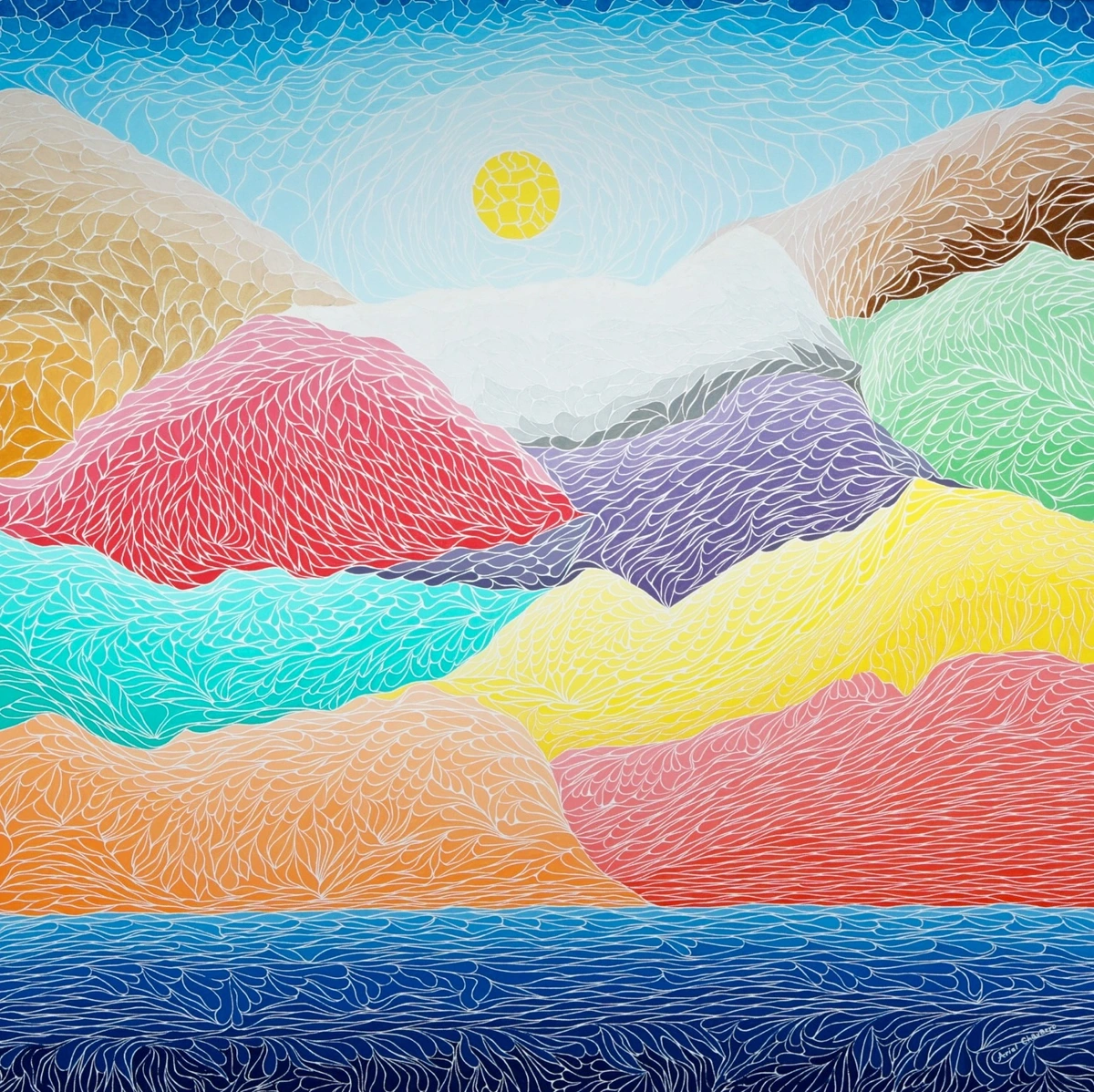
Or consider a painting like Caspar David Friedrich's Wanderer above the Sea of Fog. While often interpreted as Romantic contemplation, the solitary figure gazing out over the misty landscape embodies a profound yearning for the infinite, for understanding, or for connection with the sublime. There's melancholy in the solitude, but immense hope and aspiration in the gaze towards the vast, unknown horizon. It reminds us that even in the feeling of lack, there is a recognition of value, a spark of hope that keeps us looking, searching, creating. And for the viewer, encountering art that speaks to this hope can be incredibly cathartic, a shared acknowledgment that the ache is real, but so is the possibility.
How Artists Capture Yearning: Techniques, Symbolism, and Media
So how do artists take this complex feeling – this blend of ache and hope, presence and absence – and make it visible? They use the fundamental elements of art and various techniques to translate the intangible into tangible form. It's like trying to capture mist in a bottle, difficult, but sometimes, just sometimes, you get a spark.
Color and Mood
Color is a direct line to emotion. Blues can evoke distance or melancholy, while warm oranges and reds might speak of passionate desire or nostalgic warmth. Artists manipulate how artists use color not just to depict reality, but to create a feeling. Think of the deep, resonant hues in a Rothko, designed to envelop you in a contemplative, almost yearning space. Or the vibrant, almost aching blues in a Van Gogh sky, hinting at a longing for the infinite.
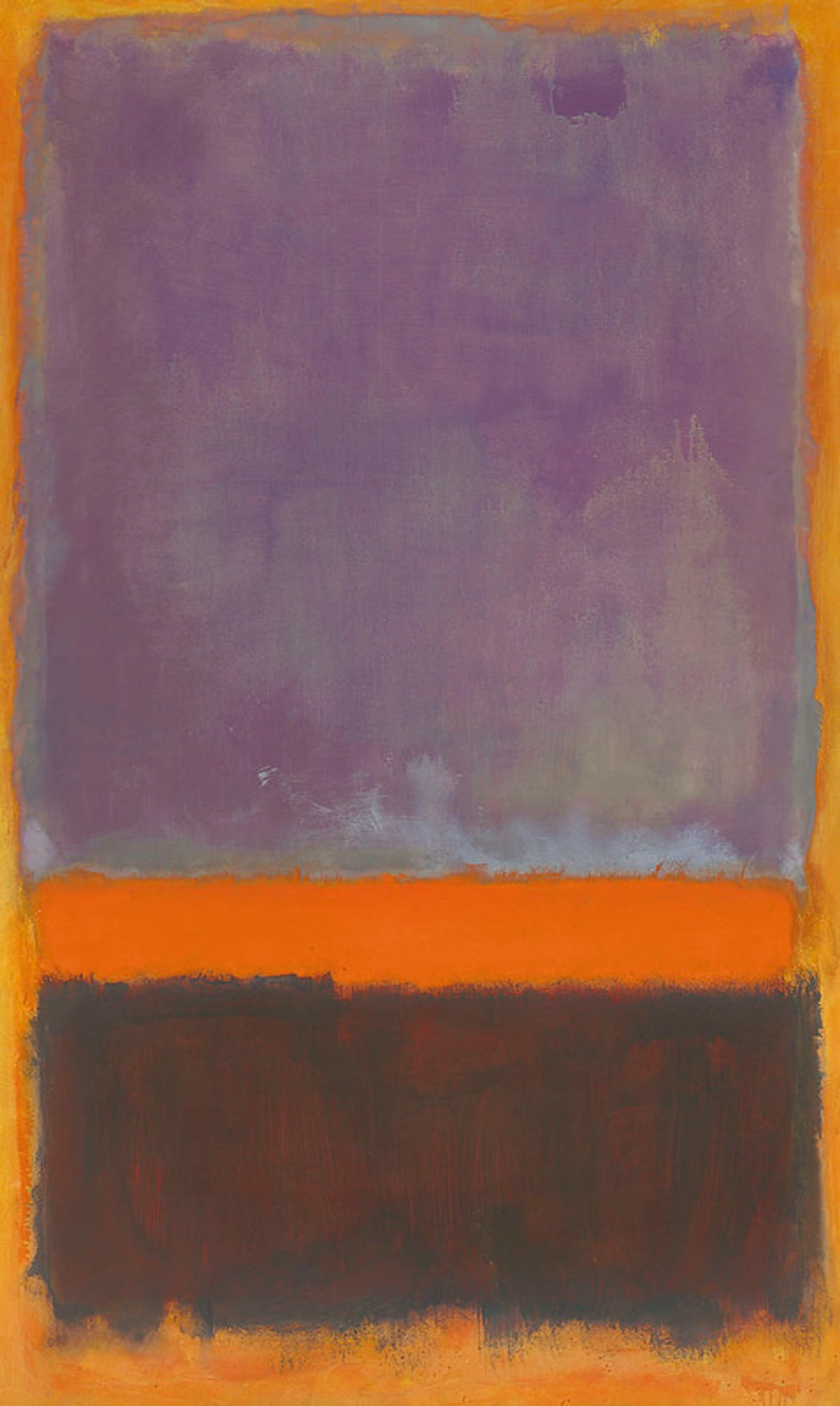
Techniques like glazing can create layers of color that suggest depth or distance, enhancing a sense of longing for something far away or just out of reach – like layers of memory obscuring the original moment. Impasto, thick application of paint, can give a raw, textured surface that speaks to the difficulty or intensity of the ache, the physical struggle mirroring the emotional one. For me, sometimes a certain blue just feels like that quiet ache, or a vibrant orange feels like the energy of a future possibility I'm reaching for. It's the visual equivalent of a sigh or a hopeful breath.
Composition and Space
Composition, the way elements are arranged, is crucial for creating a sense of longing. Empty space, figures looking off into the distance, objects placed far apart – these choices visually represent separation, distance, or the vastness of the desired thing. Negative space isn't just empty; it can be pregnant with possibility or absence, like the quiet before a storm or the vastness of an unfulfilled dream. It's a powerful tool in abstract art especially, where the void can speak volumes about what is missing or desired.
Consider the scale of a work. A vast landscape painting can make the viewer feel small, emphasizing a yearning for connection to something immense or a longing for escape into the sublime. An intimate portrait, on the other hand, might focus intensely on a single figure's expression, highlighting a deep personal longing or the ache of isolation. Placing a single, small figure in a large, empty landscape is a classic way to evoke this feeling of being alone and searching.
Form and Shape
Beyond composition, the very forms and shapes an artist uses can embody yearning. Elongated, reaching shapes can suggest stretching towards something distant or unattainable. Fragmented or broken forms might speak to the ache of separation or a yearning for wholeness. Enclosed or huddled shapes could evoke a longing for safety or intimacy. In abstract art, the interplay of sharp angles and soft curves, or solid masses and ethereal forms, can create a visual language that resonates with the push and pull of desire and absence.
Light and Shadow
The interplay of light and shadow can dramatically enhance the mood of yearning. Soft, fading light can evoke nostalgia or loss, while sharp contrasts might highlight the stark reality of separation or the intensity of desire. Artists use how artists use light and shadow dramatically to sculpt form and, crucially, to shape emotion, creating depth that goes beyond the visual. Think of a single figure silhouetted against a bright horizon – the light emphasizes the distance they yearn towards. Or a face half-hidden in shadow, suggesting hidden desires or a longing that cannot be fully expressed.
Subject Matter and Symbolism
Obvious, right? A painting of someone gazing out a window, a lone figure in a vast landscape, or objects that evoke memory (like old letters or faded photographs) can directly address yearning. But it can also be more subtle. A vibrant, idealized landscape might express a yearning for nature or escape. A distorted portrait could capture the internal turmoil of longing. Here are a few ways artists use subject matter:
- Figures in Isolation: A single person in a large space emphasizes loneliness or distance.
- Looking Outward: Figures gazing at horizons, windows, or the sea suggest looking towards something distant or unknown.
- Objects of Memory: Items tied to the past evoke nostalgia and longing for what was.
- Idealized Scenes: Perfect landscapes or utopian visions can represent a yearning for a better reality.
- Distorted Forms: Can express the internal ache or turmoil associated with longing.
Beyond literal depiction, artists employ symbolism. A caged bird might symbolize a yearning for freedom, a winding road the longing for a journey, or water the subconscious depths of desire or loss. Other common symbols include doors or thresholds (representing transition or the unknown future), ships sailing away (departure, loss, or adventure), or distant lights (hope, a destination). These symbols tap into universal human experiences of longing. Understanding symbolism in art can unlock deeper layers of meaning related to yearning.
Texture and Material
The physical surface of the art can contribute too. Rough, textured surfaces might feel like the difficulty or rawness of longing, while smooth, polished surfaces could evoke a sense of idealized memory or unattainable perfection. The very act of working with materials – the resistance of clay, the flow of paint – can be an expression of the artist's internal state, including yearning. Sometimes, the texture itself feels like the rough edges of an unfulfilled dream, or the smooth surface of a memory polished by time.
Beyond Paint and Canvas: Yearning in Other Visual Media
Yearning isn't limited to painting and sculpture, of course. It resonates powerfully in photography, capturing fleeting moments, distant places, or the poignant stillness of absence. A photograph can freeze a moment of intense longing or document a place that exists only in memory. In video art, looping footage can evoke a sense of being stuck in a moment of yearning or endlessly searching, while slow-motion or fragmented visuals can mirror the elusive nature of desire. Installation art can create immersive environments that transport the viewer to a state of nostalgia or displacement, physically embodying the feeling of longing for a different space or time. These mediums offer unique ways to explore the temporal and spatial dimensions of yearning.
Famous Faces of Yearning in Art History
Yearning shows up across movements and centuries. This is just a small selection, as countless artists have explored this theme. Here are just a few examples that come to mind, and how they visually capture this feeling:
- Romanticism: This movement practically invented artistic yearning! Think of vast, dramatic landscapes that dwarf human figures, evoking a longing for the sublime, for nature's power, or for a connection to something larger than oneself. Caspar David Friedrich's wanderers gazing over misty seas are prime examples; the solitary figure, often seen from behind, stands small against the immense, mysterious landscape, embodying the longing for the infinite and the unknown. Thomas Cole's "The Departure" also captures this sense of setting off towards an unknown, longed-for future, the figure small against the vast, bright horizon, visually representing the journey towards a desired, distant state.
![]()
- Symbolism: Emerging later, Symbolism used evocative imagery and symbols to explore inner worlds, dreams, and emotions, often including themes of spiritual yearning, unattainable beauty, or melancholic longing. Artists like Gustave Moreau or Odilon Redon created works filled with mysterious figures and landscapes that felt like visions or dreams, tapping into a yearning for the spiritual or the hidden depths of the psyche.
- Expressionism: Focused on internal emotional experience, Expressionism is fertile ground for yearning, often expressed through distorted forms and intense color. Edvard Munch's iconic "The Scream" captures a moment of existential anguish that feels very much like a desperate, overwhelming yearning for peace or escape, the swirling colors and distorted figure embodying the internal turmoil and a desperate longing for release.
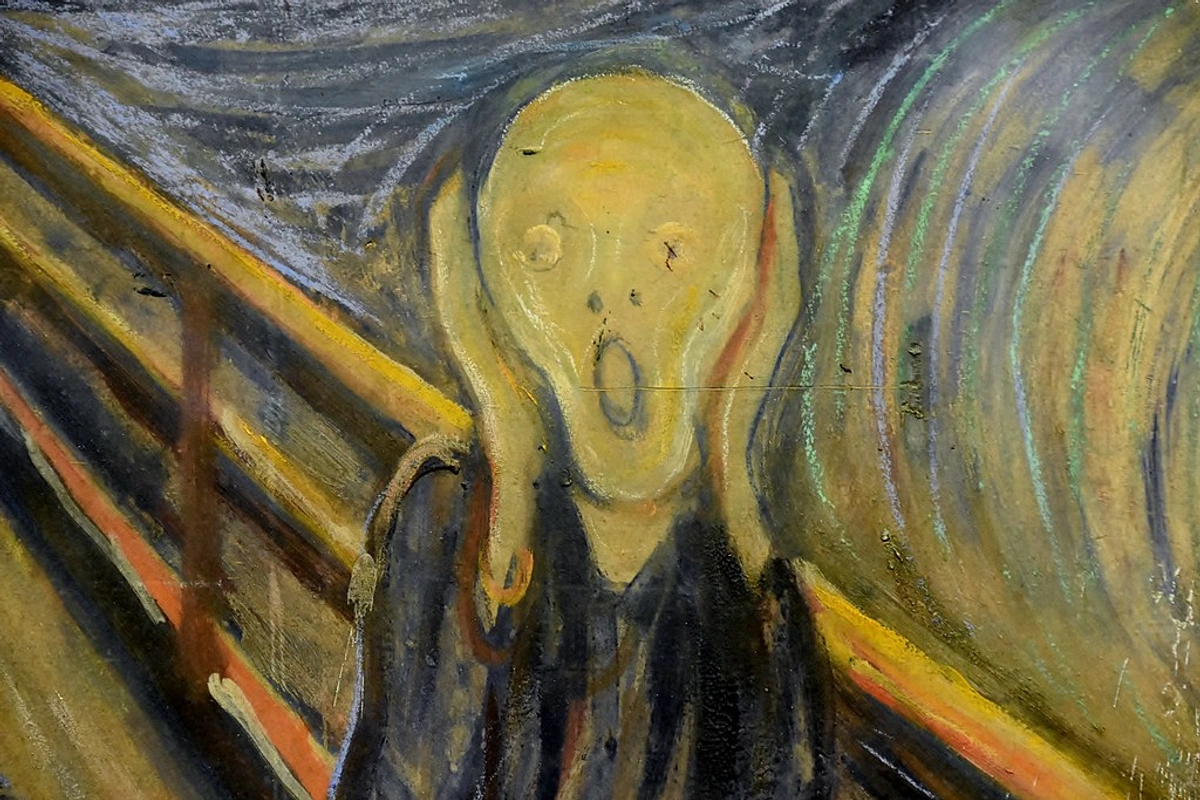
Piet Mondrian's "Evening; Red Tree" uses color and simplified form to evoke a deep, almost melancholic feeling of connection to nature at dusk, the aching forms suggesting a spiritual longing or a search for essence. It's not the grid work he's most famous for, but an earlier piece that really captures that searching feeling.
- Surrealism: Exploring the subconscious and dreams, Surrealism often taps into deep, sometimes unsettling, desires and longings. Dalí's melting clocks in "The Persistence of Memory" evoke a yearning for control over time, or perhaps a melancholic acceptance of its relentless passage, the distorted forms mirroring the fluid, elusive nature of memory and desire. The vast, empty landscapes in many Surrealist works can also evoke a profound sense of isolation and longing for connection or meaning.

René Magritte's "The Son of Man", with the apple obscuring the face, can suggest a yearning for identity or recognition that remains just out of sight, the ordinary subject matter made strange to highlight the hidden or desired self.
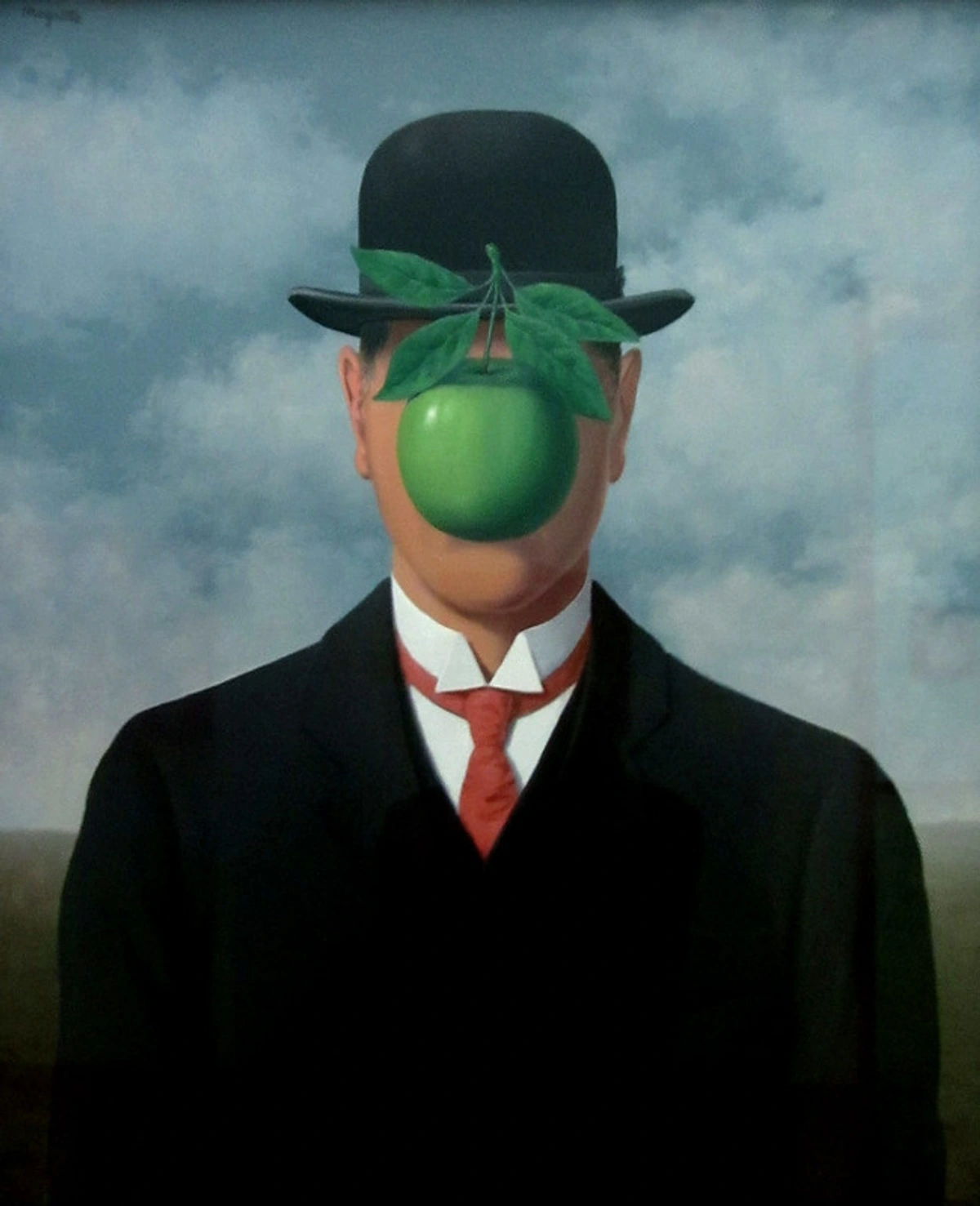
- Abstract Expressionism: While often focused on the act of painting itself, artists like Rothko sought to evoke profound emotional states through color and form. His large, glowing canvases can feel like a yearning for the spiritual, the infinite, or a deep emotional connection with the viewer. Rothko's paintings at Beyeler are a prime example of how pure color can create an immersive, almost yearning space. It's like standing on the edge of something vast and unknown, feeling that pull.
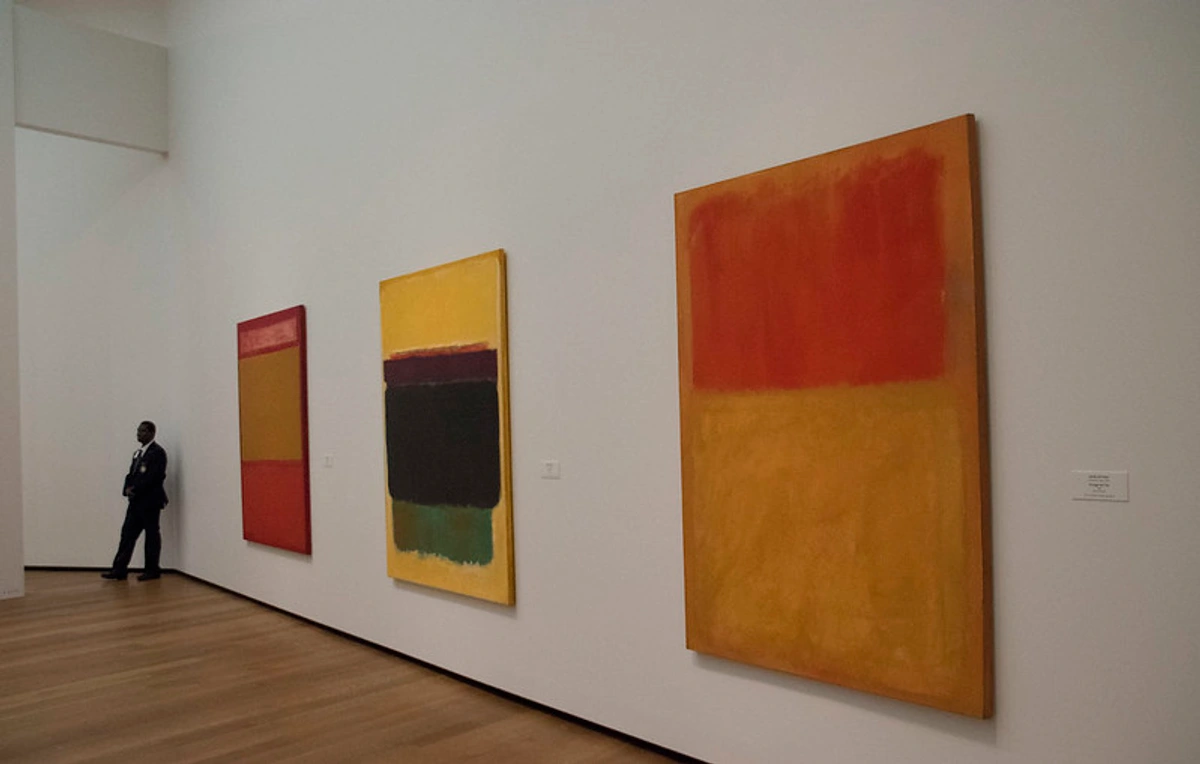
These historical examples lay the groundwork for how contemporary artists continue to explore yearning today, often with new mediums and perspectives.
Contemporary Yearning: New Voices, Same Ache
Yearning hasn't gone anywhere. In the contemporary art world, artists continue to explore this deep human emotion, often through the lens of modern anxieties, global connections (and disconnections), and personal identity. You see it in:
- Photography and Film: Capturing fleeting moments, distant lands, or the quiet solitude of individuals in urban spaces. Think of the poignant stillness in the work of a photographer like Gregory Crewdson, where suburban scenes feel pregnant with unspoken longing and isolation. Or the way a film can use lingering shots and melancholic scores to evoke a powerful sense of absence or a yearning for something lost.
- Installation Art: Creating immersive environments that evoke feelings of nostalgia, displacement, or the desire for connection. An installation might use light, sound, and found objects to transport you to a memory or a longed-for state. Consider works that create enclosed spaces, perhaps evoking a yearning for safety or intimacy, or vast, open installations that speak to a longing for freedom or the overwhelming scale of the world. Artists like Yayoi Kusama, with her mirrored infinity rooms, can evoke a sense of boundless space that might speak to a yearning for the infinite, or conversely, a feeling of overwhelming repetition and longing for escape.
- Performance Art: Exploring the body's capacity for endurance, vulnerability, and the expression of deep emotional states, often touching on themes of longing for connection or understanding. Marina Abramović's work, for instance, often involves intense, prolonged interactions that speak to a profound human need for presence and connection, highlighting the ache of its absence in a disconnected world.
- Digital and Video Art: New media offer unique ways to explore yearning. Looping videos can capture a sense of being stuck or endlessly searching. Digital landscapes can depict impossible, longed-for places. Interactive installations might explore the yearning for connection in a digital age, or the isolation it can sometimes create. Imagine a piece of glitch art where a perfect image is constantly fragmenting and reforming – it could feel like a yearning for stability or wholeness in a chaotic digital world. Artists using fragmented digital imagery might evoke a yearning for wholeness or stability in a fragmented world.
- Abstract and Figurative Painting: Contemporary painters use color, form, and subject matter to express yearning in myriad ways, from the explosive energy of a canvas reaching for the sublime to the quiet, introspective gaze of a portrait that seems to hold a universe of unspoken desires. Artists like Adrian Ghenie, with his distorted, layered portraits, can evoke a sense of searching for identity or grappling with fragmented memory, both forms of yearning.
Many contemporary artists, myself included, find that the abstract language of color and form is particularly suited to capturing the elusive nature of yearning. It's not about depicting the object of longing, but the feeling itself. A certain blue might not be the color of a lost love's eyes, but it can evoke the feeling of that loss, that distance, that quiet ache. It bypasses the literal and goes straight to the feeling. If you're interested in exploring contemporary art, checking out best contemporary artists or contemporary art galleries in the US or Europe can be a great starting point.
Finding Art That Speaks to Your Yearning
So, how do you find the art that resonates with your particular flavor of yearning? This is where it gets personal for you. The art that speaks to my longing might be different from the art that speaks to yours. That's the beauty of it. Art is a mirror, reflecting our own inner landscapes. It's a conversation, and sometimes the most profound conversations are the silent ones you have with a painting.
If a piece makes you feel a sense of longing, nostalgia, or a pull towards something unseen or distant, it's speaking to your own experience of yearning. There's no single right answer; art is subjective. Your connection is the key. Trust your gut feeling, that quiet hum of recognition.
To actively seek out art that resonates, try asking yourself:
- What colors evoke a sense of distance, memory, or hope for me?
- Do I feel drawn to vast, open compositions or more contained, intimate spaces?
- Does the use of light and shadow in a piece create a mood that feels familiar to my own moments of longing?
- Are there specific symbols (like horizons, windows, birds, water) that appear in art that speak to my personal desires or sense of absence?
- Does the texture or material of a piece feel raw and aching, or smooth and dreamlike?
- What kind of yearning do I feel most strongly right now – for the past, the future, connection, or something else entirely?
Exploring different art styles and visiting art galleries (or even virtual art gallery tours online!) can help you discover what connects with you. Don't be afraid to spend time with a piece, letting it sit with you. Sometimes the yearning it evokes is subtle, a quiet hum rather than a loud cry.
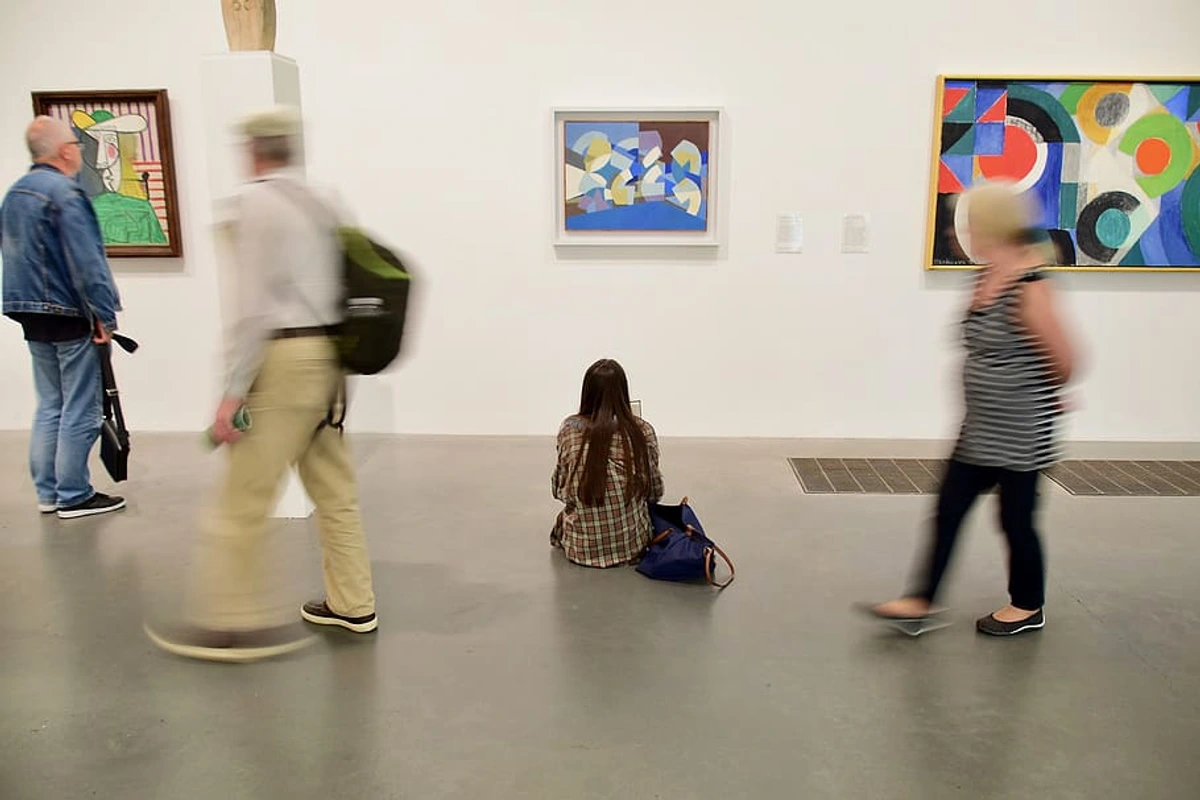
If you're looking to bring art into your own space, perhaps art that acknowledges or even soothes that feeling of yearning, consider exploring art for sale. Finding that perfect piece can be a journey in itself, a kind of yearning fulfilled. You might find pieces that capture the ache, the hope, or the quiet beauty of longing. My own work often grapples with these themes, trying to give form to that ineffable space between here and there.
The Challenging Side of Yearning in Art
But let's be honest, yearning isn't always a gentle, poetic ache. While often framed romantically, yearning can also manifest as obsession, dissatisfaction, or even paralysis. Art doesn't shy away from these darker aspects. A portrait might capture the torment of unrequited love, an abstract piece the chaotic energy of restless dissatisfaction, or a performance piece the physical exhaustion of a relentless, unfulfilled pursuit. Imagine a painting with frantic, layered brushstrokes and clashing colors, depicting a figure trapped within a confined space – it could powerfully convey the feeling of being consumed by an obsessive, unfulfilled longing, like being caught in a thorny bush you can't escape. These works remind us that yearning is not always a gentle ache; it can be a powerful, sometimes destructive force, and art provides a space to confront and process these difficult emotions.
Art as Catharsis: Processing Yearning Through Creation and Viewing
One of the most powerful aspects of art about yearning is its potential for catharsis. For the artist, the act of creation itself can be a way to channel, understand, and perhaps even release the intensity of their longing. It's a process of externalizing an internal state, giving it form and making it manageable. The struggle in the studio, the wrestling with materials, can mirror the internal wrestling with the feeling itself. Finishing a piece can bring a sense of resolution, even if the original yearning remains.
For the viewer, encountering art that resonates with their own yearning can be equally cathartic. Seeing your own complex, sometimes isolating, feelings reflected in a work of art can be incredibly validating. It's a reminder that you are not alone in this fundamental human experience. It can provide a sense of connection, not just to the artist, but to the countless others who have felt this ache throughout history. It allows for a moment of shared understanding, a quiet nod across time and space. It's like finding a message in a bottle from someone who felt exactly the same way, centuries ago.
Yearning also finds expression in other creative forms like poetry, music, and dance, reinforcing its fundamental place in the human condition. These different languages of expression all point to the same deep well of human experience.
Conclusion: Embracing the Ache and the Hope
Yearning is a complex, beautiful, and sometimes uncomfortable emotion. It's the space between where you are and where you want to be, who you are and who you long to become. Art doesn't necessarily solve that feeling, but it acknowledges it, validates it, and gives it a voice. It reminds me of my own journey as an artist, constantly striving, constantly reaching for something just beyond my grasp.
Whether you're creating art or simply experiencing it, engaging with pieces that touch upon yearning can be a profound experience. It reminds us that this universal human feeling is something to be explored, understood, and even embraced. It's part of the rich tapestry of life, and art is there to help us see its threads. If you're looking for art that speaks to this feeling, explore museums, galleries, and online platforms. Look for pieces that evoke a sense of distance, memory, hope, or connection. You might find something that feels like coming home, or like catching that elusive moonlight.
Perhaps the art you connect with most deeply is the art that mirrors your own quiet, persistent yearning. And that, I think, is a beautiful thing. So, what art will you seek out to explore your own yearning today?
